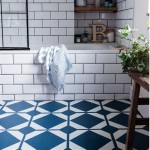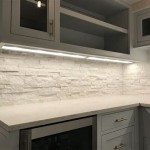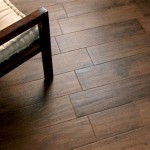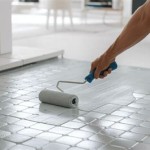How to Lay Ceramic Tile Around a Kitchen Sink Drain
Laying ceramic tile around a kitchen sink drain requires precision and careful planning to achieve a professional and aesthetically pleasing result. The complexity arises from the circular shape of the drain and the need to seamlessly integrate the tiles around it, maintaining a consistent slope towards the drain opening. This article provides a comprehensive guide on how to successfully lay ceramic tile around a kitchen sink drain, covering essential preparation steps, tile cutting techniques, and installation procedures.
Before embarking on this project, it is crucial to gather all the necessary tools and materials. These include ceramic tiles of the desired size and design, thin-set mortar, a notched trowel, a wet saw or tile nippers, a measuring tape, a pencil, a level, a rubber grout float, grout, sponges, a bucket, a utility knife, safety glasses, and gloves. Ensuring that all materials are readily available will streamline the tiling process and minimize interruptions.
Proper preparation of the substrate is paramount for a successful tile installation. The surface around the kitchen sink drain must be clean, level, and structurally sound. Any existing flooring or countertop material should be thoroughly cleaned and free of debris, grease, and loose particles. If the existing surface is uneven, it may require leveling compound to create a smooth base for the tiles. It is also advisable to prime the surface with a suitable primer to enhance the adhesion of the thin-set mortar.
Selecting the appropriate ceramic tile is another important consideration. The tile should be durable, water-resistant, and suitable for use in a kitchen environment. The size of the tile will also influence the complexity of the installation process, with smaller tiles generally being easier to work with around curved surfaces like a sink drain. Consider the overall aesthetic of the kitchen and choose a tile that complements the existing décor.
Planning and Layout
Careful planning and layout are essential for achieving a professional-looking tile installation around a kitchen sink drain. Begin by taking precise measurements of the area surrounding the drain and determining the optimal placement of the tiles. It is often helpful to create a template or a dry layout of the tiles to visualize the final result and identify potential challenges such as the need for intricate cuts.
A dry layout involves arranging the tiles around the drain without applying mortar. This allows for adjustments to be made before committing to the actual installation. It is important to consider the grout lines during the dry layout, as these will impact the overall appearance of the finished surface. Use tile spacers to maintain consistent grout line widths throughout the installation.
When planning the layout, consider the visibility of cut edges. Ideally, cut edges should be positioned in areas that are less visible, such as under the edge of the sink or against a backsplash. This will help to minimize the visual impact of any imperfections in the cuts. Aim to position full tiles in the most prominent areas to create a more balanced and aesthetically pleasing design.
Mark the center point of the drain on the substrate and use this as a reference point for laying out the tiles. Draw concentric circles around the drain to represent the approximate locations of the cut tiles. These circles will serve as guides when cutting the tiles to fit around the drain opening.
Document the layout with photographs or detailed sketches. This documentation will be invaluable during the actual installation process, serving as a reference point for tile placement and cutting. It is often helpful to label each tile with a number or letter to correspond to its position in the layout. This will prevent confusion and ensure that the tiles are installed in the correct order.
Cutting Tiles Around the Drain
Cutting tiles to fit around a kitchen sink drain requires precision and specialized tools. A wet saw is generally the preferred tool for making clean, accurate cuts in ceramic tile. However, tile nippers can also be used for making curved cuts, particularly when working with smaller tiles. Safety glasses and gloves should always be worn when cutting tiles to protect against flying debris and sharp edges.
For straight cuts, a wet saw provides the cleanest and most accurate results. Measure the tile accurately and mark the cutting line with a pencil. Feed the tile slowly and steadily through the wet saw, keeping the blade perpendicular to the tile surface. Allow the water to lubricate the blade and prevent overheating.
Cutting curved shapes around the drain requires a different technique. Use a template or the previously drawn concentric circles as guides. Carefully mark the cutting line on the tile with a pencil. If using a wet saw, make a series of small, angled cuts along the curve to remove small pieces of tile. This technique, known as "nibbling," allows for gradual shaping of the tile to the desired curve.
Tile nippers are particularly useful for making small, precise cuts along curved lines. Hold the nippers with the jaws aligned along the cutting line and gradually chip away small pieces of tile. Avoid applying excessive pressure, as this can cause the tile to crack or shatter. Work slowly and carefully to achieve the desired shape.
After cutting each tile, dry-fit it around the drain to ensure a proper fit. Make any necessary adjustments before applying the thin-set mortar. If a tile does not fit correctly, it is better to recut it than to force it into place. Forcing a tile can create stress points that can lead to cracking or detachment in the future.
Applying Mortar and Setting Tiles
Once the tiles have been cut and dry-fitted, the next step is to apply the thin-set mortar and set the tiles in place. Use a notched trowel to apply a thin, even layer of mortar to the prepared substrate. The size of the notches on the trowel will determine the thickness of the mortar bed. Follow the manufacturer's instructions for the recommended trowel size.
Apply the mortar in small sections, working systematically around the drain. Do not apply more mortar than can be covered with tiles in a reasonable amount of time. If the mortar begins to dry out, it will lose its adhesive properties. Press each tile firmly into the mortar, using a slight twisting motion to ensure good contact. Maintain consistent grout line widths using tile spacers.
Pay particular attention to the tiles around the drain. Ensure that these tiles are properly aligned and level with the surrounding tiles. Use a level to check the surface periodically and make any necessary adjustments. Clean any excess mortar from the tile surfaces with a damp sponge. Avoid getting mortar in the grout lines.
Allow the mortar to dry completely according to the manufacturer's instructions. This typically takes 24 to 48 hours. Avoid walking on or disturbing the tiles during the drying period. Once the mortar is dry, the tile surface should be solid and stable.
Remove the tile spacers and inspect the grout lines for any debris or obstructions. Clean the grout lines thoroughly with a utility knife or a grout saw. Ensure that the grout lines are clean and free of any residue before applying the grout.
Mix the grout according to the manufacturer's instructions. Apply the grout to the tile surface using a rubber grout float. Work the grout into the grout lines, ensuring that they are completely filled. Remove any excess grout from the tile surfaces with the grout float.
Allow the grout to dry slightly, typically for 15 to 30 minutes. Then, use a damp sponge to clean the tile surfaces. Rinse the sponge frequently and wring out any excess water. Wipe the tile surfaces in a circular motion to remove any remaining grout haze.
Allow the grout to cure completely according to the manufacturer's instructions. This typically takes several days. During the curing period, protect the tile surface from excessive moisture and heavy traffic. Once the grout is fully cured, apply a grout sealer to protect it from stains and water damage. The sealer should be applied according to the manufacturer's instructions and reapplied periodically to maintain its effectiveness.

Diy Kitchen Sink Backsplash On The Upcycle

Installing Tile Countertops Backsplash Family Handyman

Permadrain How To Install

Regency 18 X 14 Gauge Stainless Steel Floor Sink With Removable Grate

Under Sink Vinyl Flooring The Craft Crib

Invisidrain Discreet Tiled Floor Waste Solution Allproof

Regency 12 X 14 Gauge Stainless Steel Floor Sink With Removable Grate

How To Install A Drop In Kitchen Sink Lowe S

How To Install A Drop In Sink Do S And Dont

How I Diyed Our Marble Backsplash With Love Mercedes
Related Posts








